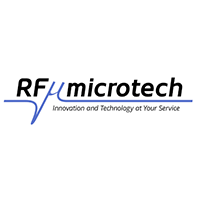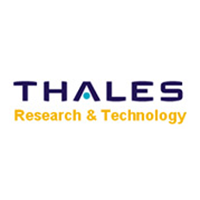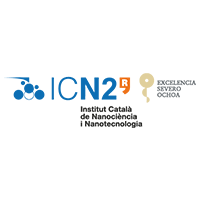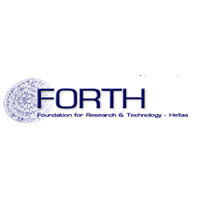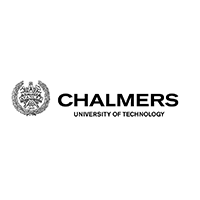concept of nanosmart project
The evolutionary path of contemporary wireless communication systems to future ones is twofold. On the one hand it relies on the continuous enhancement of terrestrial cellular communications network such as 4G into 5G and on the other hand on the transition from present satellite communications (Satcom) networks as for instance the Inmarsat (1) to emerging satellite megaconstellation such as Oneweb (2) . In both cases the priority is to increase the service capacity and bridge the so called societal or geographical digital gap. There are plenty of open critical ICT issues at software/data processing level (protocol, spectrum, waveforms management and optimization) and at hardware level. The latter is far more critical as it requires a heavier infrastructural investment and poses tougher technological challenges to be solved.
In this panorama there are two technical choices which are considered as the main enabling factors to render future high speed wireless communications. The first is the use of millimetre wave frequencies (above 20 GHz) which open up the access to Gbps wide bandwidths. Second is the use of adaptive multiple beam steering technologies which enhance the user capacity.
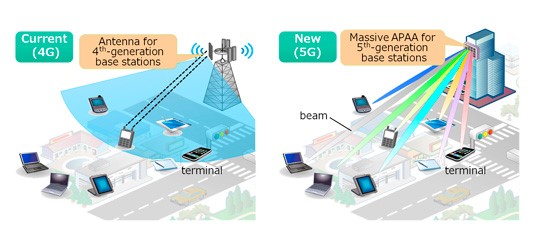
After a first migration of the present 4G to the 6 GHz frequency range the 5G is posed to step up into the higher frequency band (10 GHz, 28 GHz, and finally reach as high as 86 GHz ) which are currently being discussed by industrial and institutional stakeholders (1)
As frequency increases, the beam steering accuracy is increasingly sensitive to external ambient conditions (such as temperature, humidity, RF noise and system ageing) (2) and thus affect link loss and error rate. For the case of high end RADAR applications, system calibration (3) (TRX calibration procedure) was regularly needed to sustain beam steering accuracy and thus reliable radar operation. However as MIMO expands to consumer electronics the associated cost and maintenance model is no longer viable and needs to be changed to a non hermetically sealed system, with self-calibrating capability that results in low cost. NANOSMART proposes the incorporation of electronic smart systems sensing temperature, humidity and RF interference to compensate for such effects in real-time and provide on the fly phased array response recalibration. A smart system that would have the ability to reconfigure itself in real time to battle changing conditions would drastically reduce the required power and increase wireless link availability.
NanoSmart Objectives
NANOSMART global vision is to address the current issues in hardware technology for wireless applications by providing a smaller, smarter, more efficient, lower cost technology able to scale to higher frequencies than existing solutions. The main objectives of NANOSMART are listed in the following table
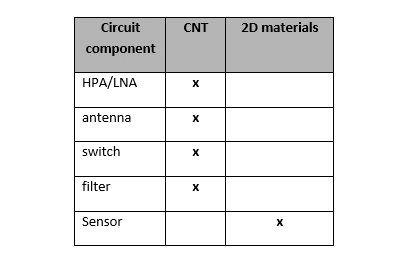
Objective 1: Develop new components for analog applications :
NANOSMART develops technology based on Carbon NanoTubes (CNT) and 2D materials which have been identified by ITRS as the most promising materials for future electronics. They both offer scalability potential well beyond that of Silicon or any other conventional semiconductor.
NANOSMART will develop all key components to implement wireless transceiver technology based on those materials thus establishing the future generation of analog electronics. In total NANOSMART addresses mmWave ICs and power management using 2 different material technologies complementing each other.
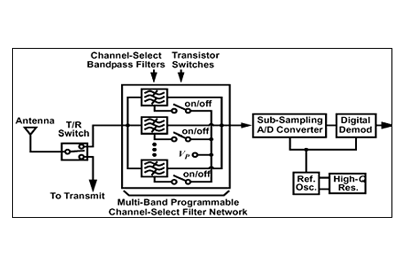
Objective 2: Increase analogue circuit efficiency and add power management functionality:
CNT in deep contrast to conventional semiconductors have symmetric n and p type mobilities thus making them ideal for complementary analog amplifiers that do not suffer from reduced linearity. This will drastically increase power efficiency and noise of the analogue circuits in Transmission / Reception (Tx/Rx) systems. Power management by switching off inactive circuits on chip is also built in the NANOSMART objectives further reducing power consumption.
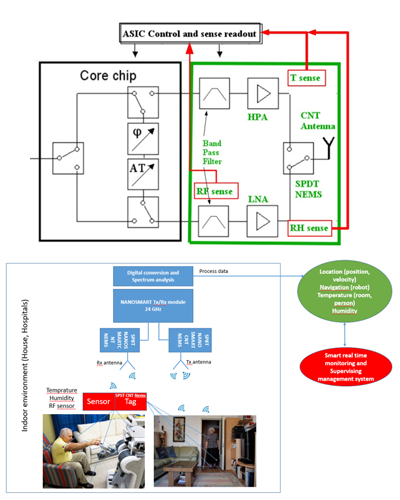
Objective 3: Provide ambient aware, reconfigurable wireless electronic smart systems
NANOSMART introduces three (3) type of sensors (temperature, humidity, interference/background EM sensor) to achieve two critical aspects of future smart electronics:
- Mitigate the need for TRX recalibration in high resolution MIMO and radar systems by on the fly recalibration of the phased arrays and remove the need for hermetic sealing that will enable lower cost MIMO implementation.
- Provide autonomous system health monitoring using temperature and humidity sensors to derate or turn off power electronics at adverse conditions and continuously monitor RF interference to adapt to emission / reception noise floor changes that will become increasingly important as the node density increases.
Reconfigurability by nano switches will provide built-in capability of corrective actions within the NANOSMART integrated circuits to achieve optimum power to functionality performance.
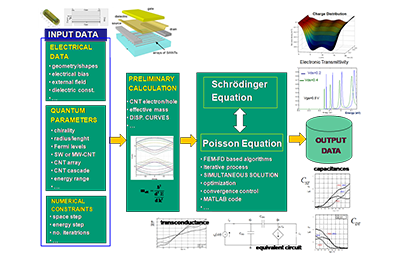
Objective 4: Provide design toolkit for all new technology to enable industrial penetration :
NANOSMART aims at developing complete and robust design and modelling for all components addressed in the project thus realising an extensive engineering toolkit. This is critical to enhance industrial adoption of the breakthrough technology created in the project.
In conclusion, NANOSMART will design, develop, fabricate and demonstrate novel components based on two material technologies, fully integrated and capitalize that by realising two demonstrators for radar and IoT / wireless applications to prove the concept of the project.
NanoSmart Coordinator
Dr. Afshin Ziaei
afshin.ziaei@thalesgroup.com

The NanoSmart project is funded by H2020 program under the grant agreement No 825430
About NanoSmart
NanoSmart aims at addressing in multiple ways the needs for next generation analogue Rx/Tx modules raised by the advancement of mobile 5G, IoT and radar applications. To achieve that, NANOSMART builds novel technology, novel architecture and highly integrated Rx/Tx smart systems

